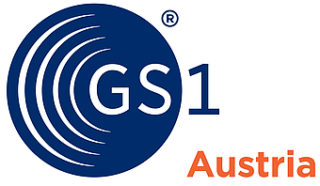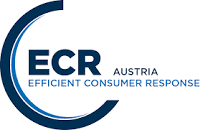New era for business documents

A trend called EDI
During the coronavirus epidemic, many companies in Austria realized how inconvenient it is to process and create paper-based documents when people work from home. Here is an almost magical tool that makes all that paper go away: EDI (Electronic Data Interchange).
Until recently, when walking into most offices in Austria, you would see orders, invoices, and despatch advices sitting around. But since teleworking has gained ground, people saw themselves forced to question these processes because receiving, processing, forwarding to business partners, and archiving these documents suddenly turned into a logistical challenge. An ingenious technical achievement that is widely used to get rid of all that paper is called Electronic Data Interchange (or EDI).
What has been in use for years at large retail and consumer goods companies such as SPAR, REWE, Coca Cola, and L’Oréal, among others, is now helping SMEs streamline their processes. Small- and medium sized businesses also have the option of exchanging all these documents electronically with their business partners, either when working at the office or from home. Here is where EDI solutions come in. The Austrian market leader is the Vienna-based company EDITEL, which also has a successful presence in neighboring countries thanks to its many subsidiaries and business partners.
“An increasing number of small- and medium-sized businesses no longer wants to waste time with the manual processing of documents when they can use their staff’s energy for more productive tasks,” said Gerd Marlovits, CEO of EDITEL. EDI not only saves time and money, but also drastically reduces mistakes.
Electronic Data Interchange makes it possible
EDI expert Klaus Schaffer explains how companies can be part of this system, which is also widely used on an international level: “Ultimately, this is all about connecting one company to another so that they can communicate with each other using a digital format.” The first step will always be an agreement between companies. “Let’s assume that a manufacturing company supplies a certain amount of goods to a retailer. These companies will first exchange master data and update them periodically,” explained the expert. Master data include product-related information such as article numbers (GTIN/EAN), weights, labeling, nutritional information, etc. Whenever a retailer places an order, transaction data are added. Via interfaces, these data are then transferred from one business partner’s ERP system to the other and vice versa in a paperless process. This electronic process is available for large and small businesses alike.
Digitalized invoice processing
For SMEs, so-called e-invoice solutions are a great choice for invoicing purposes. This solution allows SMEs to ensure the secure and traceable electronic delivery of invoices while watching their budget. Another plus is the audit-proof archiving process. This technology gets any business ready for the use of EDI in just one day. “With this entry-level EDI solution, users use the internet to log on to an online platform,” explained Mr. Schaffer. Oftentimes, it is very easy to determine which EDI application is the best choice for a given business. And then, it’s EDI showtime!
Five tips for finding the best EDI solution for you
1. Analyze your business processes
This initial stocktaking is key. Among other things, check if your company uses an ERP system and if this system has interfaces for Electronic Data Interchange. Another question to consider is the type of business documents (orders, despatch advices, invoices) you would like to exchange and how high the volume per month is. Etc.
2. Find the best EDI solution and EDI provider for your needs
SMEs with a low volume of business documents would ideally use a Web EDI portal for swift and inexpensive access to EDI. EDI solutions that allow for data integration into a company’s existing ERP system are a great choice for businesses with a high document volume. Experienced EDI providers have options that fit the needs of businesses of any size. In addition, they provide assistance for the implementation process and for onboarding new partners. The EDI platform eXite, for instance, is used by more than 20,000 businesses around the world. It reaches almost every company in the world provided that it uses Electronic Data Interchange.
3. Synchronize your master data
In an early phase of your EDI project, you should synchronize your master data (article number/GTINs, partner identification/GLNs) with your business partner’s master data. This is the basis that will ensure flawless electronic communication.
4. Start with a test phase
Before you start exchanging electronic data, you should do a test run with a few EDI messages. At GS1 Austria, there is a dedicated EDI verification service for this. After a successful verification, you might also want to agree on a certain time frame with your business partners to test all communication processes and message processing.
5. And you are all set!
After that, you will be ready to start live operations with your business partners. Your team at EDITEL will provide expert assistance every step of the way.
Symbolic image copyright pixabay, Gerd Altmann



